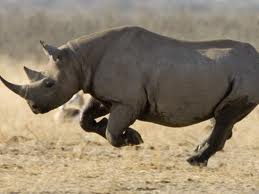We use cookies to make your experience better. To comply with the new e-Privacy directive, we need to ask for your consent to set the cookies. Learn more.
Outlook for the rhinoceros

Despite an international ban on the commercial trade of rhino horn under CITES, and the fact that it is no longer a part of the official Chinese traditional medicine pharmacopeia, rhino horns continue to be smuggled illegally from Africa to Asia, as demand for ‘medicinal’ products containing horn continues to increase in Vietnam and other parts of Asia.
In South Africa, officials are working to stop poaching by increasing protection, conducting more rigorous prosecutions and imposing stricter sentences on wildlife criminals. There were 165 arrests in 2010 in South Africa, and in 2011 there have been 155 so far (as of October 2011). However, the organized crime syndicates behind the poaching are becoming increasingly sophisticated, and sometimes have very close ties to the wildlife community. In some South African provinces they also operate by the exploitation of complicated legal trade loopholes that allow for the export of rhino hunting trophies. Considerable improvements are therefore needed in the regulation of hunting permits, as well as with the management of rhino horn stock piles in the country.
To effectively tackle poaching, the WWF and TRAFFIC (a group that monitors international wildlife trade) are supporting the development of informant networks and investigations, and of law enforcement exchange missions between Asia and Africa to provide training and equipment. They are also calling for the elevation of poaching issues to the highest levels in governments and international leaders, and have called for corresponding commitment by countries in Asia where consumer demand for rhino horn is strongly encouraging poachers. This demand surged recently when rumours emerged that rhino horn had ‘miraculously’ cured a Vietnamese official of terminal liver cancer, although the supposed patient was never identified. A spokesperson for TRAFFIC traced the recent growth in demand to this rumour, saying that to fight a phantom cure had proved almost impossible. “If it was a real person, we could find out what happened and maybe demystify it.” [1]
Over the coming months, South Africa will be hosting government delegations from Vietnam and China to address growing demand for rhino horn in Asia. The governments will also discuss methods for greater cooperation on law enforcement and criminal investigations.
In certain areas, to prevent poaching rhinos have been tranquillised and had their horns removed, although this obviously deprives the rhinos of the natural use of their horn; for digging, or self-defence, or for guiding or attracting other rhinos.
More positively, the southern white rhino, once thought to be extinct, and the Indian rhino are thriving in well-protected sanctuaries and their numbers are increasing. Indeed, the Indian, or greater one-horned rhino is a conservation success story, as thanks to strict protection measures, its population has increased from 600 in 1975 to about 2,230 today, leading to a reclassification from Endangered to Vulnerable.
However, this is an animal that continues to face the ever-present danger of poaching for its horn, and total numbers are still a fraction of what they were fifty years ago. Moreover, there has been strong criticism of CITES recently, with concern expressed about the effectiveness of the framework to stand up to groups with commercial interests, as well as questions regarding its transparency. This was highlighted during the 2011 meeting of the Standing Committee, when conservation groups were barred from a high-level meeting on elephant conservation, due to discuss poaching and illegal ivory trading. This unusual move, proposed by the Kuwait delegate representing Asia (supported by Botswana, Colombia, Costa Rica, Dominica, Iran, Kuwait and Norway) was reversed later the same day after the Norway delegation prompted another vote. A number of the NGOs who were excluded, such as WWF, provide both technical and financial support to CITES. According to IFAW, the European Commission representative was also asked to leave but this was rescinded at the request of the UK government. [2]
1. www.smithsonianmag.com/science-nature/Defending-the-Rhino.html
2. www.bbc.co.uk/news/science-environment-14576516
